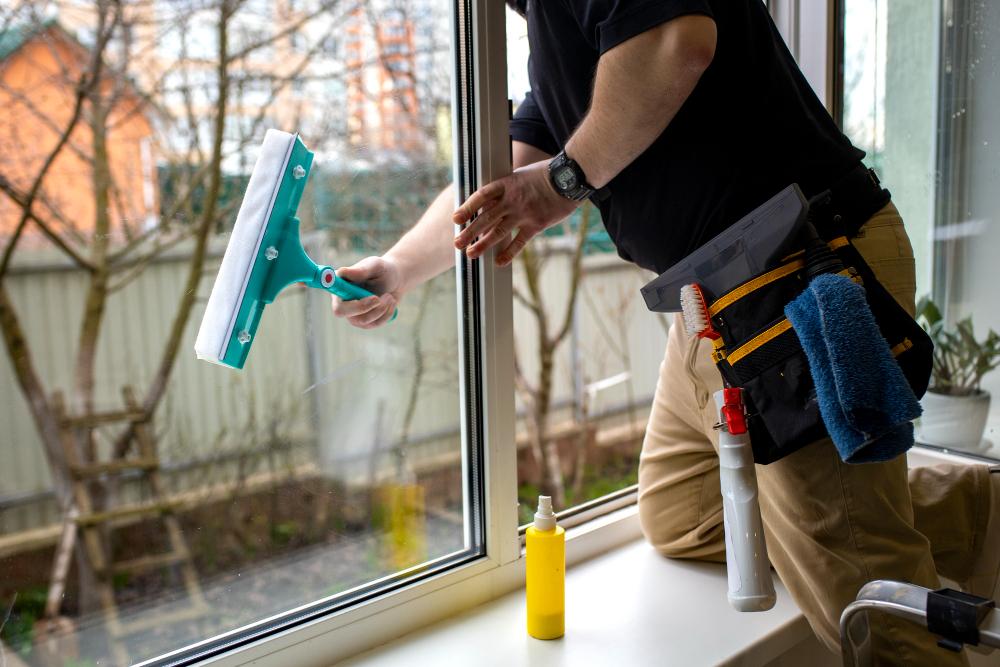
Advantages of PVC window sills: Strong and durable: Plastic sills are resistant to extreme heat and cold, do not crack, and retain their shape. Tests have shown that they are not damaged even in harsh conditions. Lightweight and durable: Despite their light weight, the double-section structure makes them highly durable and reliable. Eco-friendly: They are considered eco-friendly products because they are made of environmentally friendly materials. Easy to maintain: Resistant to moisture, stains, and scratches, easy to clean, and retain their appearance for a long time. Cheap and colorful: Cheaper than stone or wooden sills, they are not prone to cracking or chipping. Many colors and sizes (15-60 cm wide and up to 6 m long) are available. Easy to install: Cut to size, easily installed on a flat surface, and secured with additional foam and mortar. Moisture resistant: They are especially suitable for kitchens and bathrooms because they do not deteriorate when exposed to water and moisture.
Plastic decking is the most suitable and economical choice for vacuum windows because it will not crack like stone decking or rot like wood decking.

Soudal foam is a polyurethane foam widely used in construction and household applications and is one of the leading brands in the European market. It is manufactured by the Belgian company Soudal and is known for its high quality, ease of use, and durability. Below is more information about Soudal foam: 1. Features of Soudal foam Material: Polyurethane-based foam that hardens and forms a strong structure Ease of use: Available in professional and household versions. Available in pistol and manual forms. Adhesion: Good adhesion to a wide range of surfaces, including concrete, wood, metal, plastic, and brick. Heat and sound insulation: Thermal resistance from -40°C to +90°C, high sound insulation (35 mW/mK) Environmentally friendly: Freon-free, non-toxic ingredients. Shrinkage-free: Retains shape after hardening and does not form secondary foaming. Curing time: A film forms on the surface within 8 minutes, and a 3 cm thick foam hardens completely within 60 minutes Output: Up to 70 liters of foam are produced from one cylinder (depending on humidity and temperature) Soudal Window Water and Moisture Barrier Tape Soudal Window Water and Moisture Barrier Tape is a high-quality adhesive tape specially designed to protect window and door installations from water, moisture, air flow, and to provide thermal and sound insulation. The Belgian company Soudal is a leader in the construction industry, and their window insulation tapes are widely used in professional and domestic applications. Below is more information about Soudal Window Water and Moisture Barrier Tape. 1. Features of Soudal Ascend Window Waterproofing Tape Soudal window waterproofing tapes are specifically designed to protect window and door installations from water, moisture and air flow and have the following features: Waterproofing: 100% waterproof and moisture-proof, sealing the gap between the window frame and the wall. Vapor permeability: Some types of tapes are vapor permeable and prevent moisture from accumulating in the building structure. Adhesion: Good adhesion to most window frame materials such as concrete, wood, metal, PVC, aluminum. Flexibility: Made of flexible material that is resistant to temperature changes, movement and vibration. Heat and sound insulation: Reduces heat loss and isolates sound by blocking air flow. UV resistance: Resistant to ultraviolet rays and is durable (some models are resistant to up to 10 years). Ease of use: No special tools are required due to the adhesive tape design.

Advantages of PVC window sills: Strong and durable: Plastic sills are resistant to extreme heat and cold, do not crack, and retain their shape. Tests have shown that they are not damaged even in harsh conditions. Lightweight and durable: Despite their light weight, the double-section structure makes them highly durable and reliable. Eco-friendly: They are considered eco-friendly products because they are made of environmentally friendly materials. Easy to maintain: Resistant to moisture, stains, and scratches, easy to clean, and retain their appearance for a long time. Cheap and colorful: Cheaper than stone or wooden sills, they are not prone to cracking or chipping. Many colors and sizes (15-60 cm wide and up to 6 m long) are available. Easy to install: Cut to size, easily installed on a flat surface, and secured with additional foam and mortar. Moisture resistant: They are especially suitable for kitchens and bathrooms because they do not deteriorate when exposed to water and moisture. Plastic decking is the most suitable and economical choice for vacuum windows because it will not crack like stone decking or rot like wood decking.

Maintenance of PVC windows is important for their durability, thermal and sound insulation, and aesthetics. Plastic windows require less maintenance than wooden frames, but regular maintenance can extend their service life and improve their performance. 1. Rubber gasket maintenance Importance: Rubber gaskets provide thermal, sound insulation, and air tightness. If they dry out or crack, the seal will be lost. Maintenance frequency: 1-2 times a year. How to maintain: Clean the gasket with soapy water to remove dust and dirt. Apply oil or glycerin to maintain elasticity. If the gasket is hardened or cracked, it must be replaced. 3. Handle and lock (mechanism) maintenance Importance: Handles and locks must ensure the correct operation of the window opening. How to maintain: Clean the moving parts of the handle and latch from dust and dirt. Apply machine oil or WD-40 type lubricant to make it move smoothly. Tighten the screws if the handle is loose. Check the adjustment of the closing mechanism, and if the window closes too loosely or tightly, have it adjusted by a professional. Tip: Avoid using too much oil when lubricating the handle and latch, and wipe off the excess. 4. Seasonal features and adjustments Winter preparation: Check the handle and latch and adjust it to prevent heat loss in the cold. Check the gasket and frame seal to prevent air leakage. Summer preparation: Adjust the latch so that it is not too tight and gently to ensure air exchange. Clean the drain and prepare for the rainy season. 7. Additional tips If damage is found: If the frame is cracked, the glass unit is damaged, or the fittings are broken, call a professional repair service and replace the parts. Safety: Make the window handles and locking systems child-proof to prevent damage. Warranty: If the window is under warranty, have the manufacturer or installer repair or adjust it. Quality control: If quality brand-name windows and fittings (Roto, Maco) are used, the need for maintenance is minimal. 9. Maintenance results The heat and sound insulation of the window is maintained. The service life of the frame, fittings, and gaskets is extended. The aesthetics and neat appearance are maintained. The risk of damage and injury is reduced.

It is important to perform the assembly and installation of plastic (PVC) windows professionally, which will ensure their durability, heat retention, and durability. The steps below define the correct standards and requirements for the assembly and installation of plastic windows: 1. Preparation - Measurement: Accurately measure the size of the window (width, height, depth). Pay attention to the thickness of the wall, slope, and size of the window frame. Any errors will lead to heat loss and installation difficulties. Material preparation: Prepare the window frame, fasteners, mounting foam, vapor barrier tape (PSUL), silicone, and baseboards. 2. Installation standards Leveling: Use a laser level to align the window frame horizontally and vertically. Fastening: Fasten the window frame to the wall with anchor bolts or 2.5-3 cm long nails from a wall gun. The distance between the fasteners should not exceed 50-70 cm, and they should be placed 15-20 cm from the corners. Moisture and heat insulation: Vapor-moisture barrier tape (PSUL): It is glued to the outside of the window frame to prevent moisture from entering. Mounting foam: Fill the gap between the frame and the wall with high-quality polyurethane foam. Avoid excessive use of foam and apply it evenly. Internal sealing: Use silicone or acrylic sealant on the inside to prevent heat loss. Installation of the sill: Place the internal sill evenly at the bottom of the window and fill it with foam 3. Installation features Checking the sash and handles: Check that the sash is correctly assembled and that it opens and closes without any obstacles. The handles and locking mechanisms must work reliably. Installation of the glass unit: Install the vacuum glass unit correctly in the frame and check the rubber gasket seal. There should be no deflection or damage to the glass.